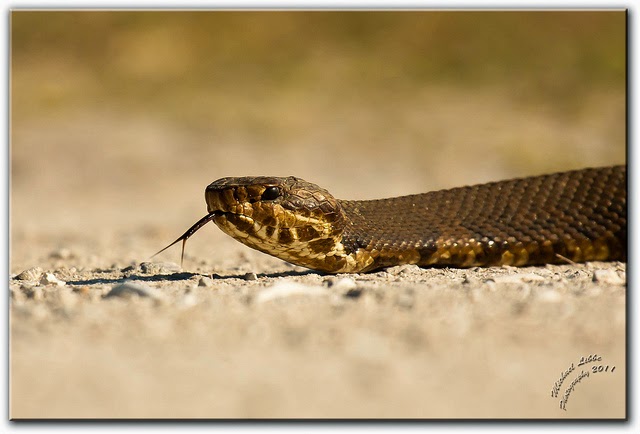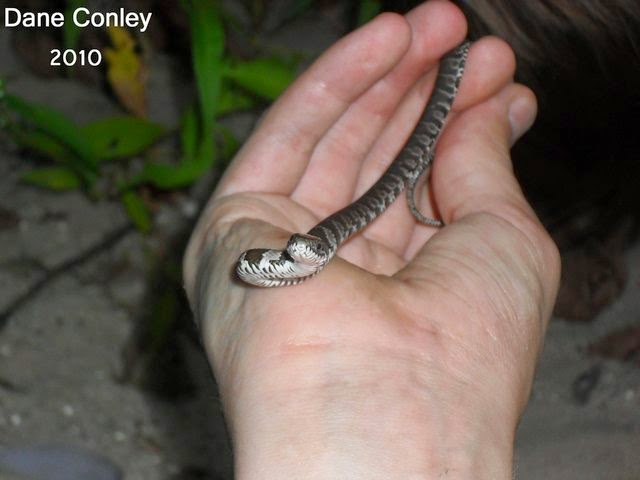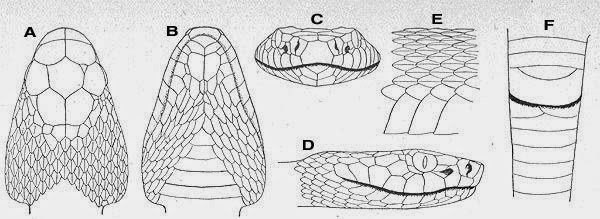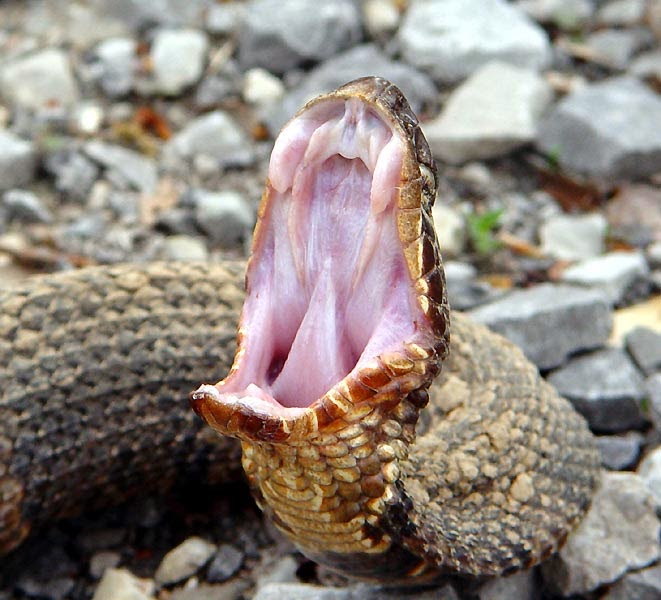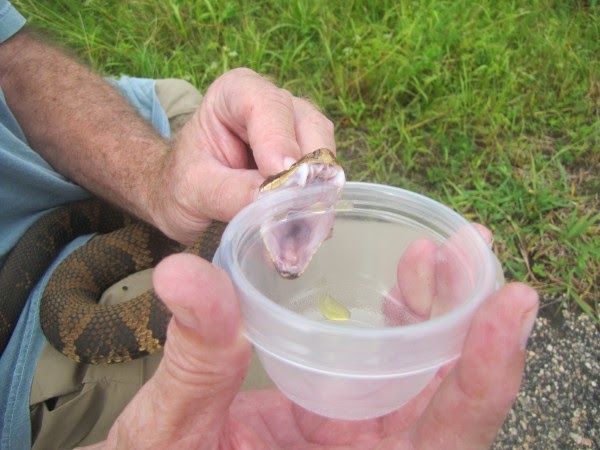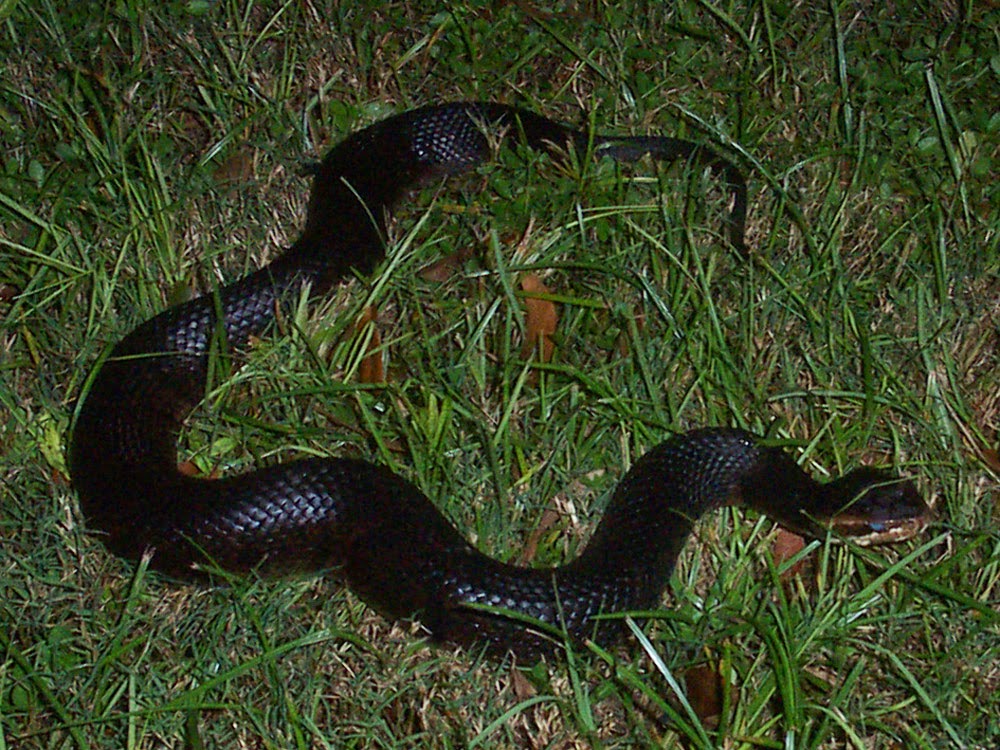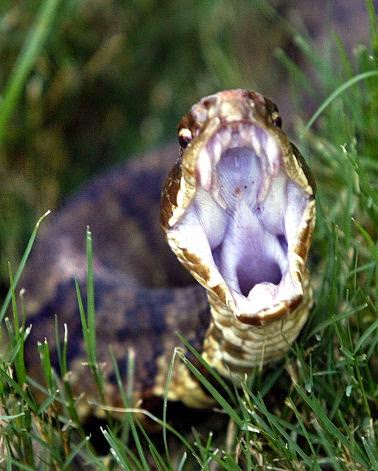Cottonmouths cannot see well or hear well. A cottonmouth uses its tongue to taste the air to track the closest thing that he wants. His tongue finds the way!
Saturday, July 19, 2014
Life Motorcycle
Water moccasins could have up to 20 babies at a time. Cottonmouths are oviviparous which means the eggs stay inside the mom for 3 to 4 months.
Thursday, July 10, 2014
good for cotton bad for preyssssssssssssss
Cottonmouths wait near their prey very still hide themselves and they are fast to strike the prey, if he gets it, it's munch time!!!
In this video a cottonmouth is trying to get some fish but when he is out of energy he decides to go to another river that has easier fish to catch.
In this video a cottonmouth is trying to get some fish but when he is out of energy he decides to go to another river that has easier fish to catch.
Wednesday, July 9, 2014
habitat slithering
- People are scared to see cottonmouths because they are one of the most dangerous snakes.
- But people don't see them often because they live in swamps and wet areas.
- More people see them now, because they loose their habitat or move to find wet areas or swamps if their house gets dry.
Aqua Identity
- Though the Cottonmouth occurs throughout Florida, it is not as abundant as the many species of harmless watersnakes that occur in much the same habitats.
- Many Florida residents do not even realize that watersnakes exist. As a consequence, every large dark-colored snake found near water is counted, and usually killed, as a Cottonmouth. There really is no excuse for this because Cottonmouths can easily be distinguished from Water Snakes.
- If the head is viewed from above, the eyes of cottonmouths cannot be seen while the eyes of Water Snakes are visible;
- Cottonmouths have elliptical pupils and Water Snakes have round pupils;
- Cottonmouths have a facial pit between the nostril and the eye, and Water Snakes have none.
- Brightly-colored baby Cottonmouths are sometimes mistaken for the Southern Copperhead (Agkistrodon contortrix), which occurs in Florida only in the panhandle. The two species are easy to distinguish because the dark bars on juvenile cottonmouths have numerous dark spots and speckles in them, while the dark bars on the copperhead have no dark spots or at most only one. In additioin, the eye of the copperhead is not obscured by the dark facial band typical of the cottonmouth.
A. Top of the head (notice the large plate-like scales on the top of the head, and that the eyes cannot be seen from above)
B. Underside of the head (chin and throat)
C. Front (face view) of the head
D. Side of the head (notice the facial pit between the eye and the nostril)
E. Keeled Scales
F. Elongated scales below the tail (subcaudal scales) are typically undivided
B. Underside of the head (chin and throat)
C. Front (face view) of the head
D. Side of the head (notice the facial pit between the eye and the nostril)
E. Keeled Scales
F. Elongated scales below the tail (subcaudal scales) are typically undivided
Copied from Florida Museum of Natural History: http://www.flmnh.ufl.edu/herpetology/fl-guide/agkistrodonpconanti.htm
Danger mouth!
Cottonmouths are usually not aggressive and will not attack unless bothered.
One of their unique behaviors is their ability to "stand their ground." When thoroughly aroused, a cottonmouth coils its body and threatens the intruder with its mouth wide open and its fangs exposed, showing the white lining of its mouth (thus its common name, the cottonmouth).
Picture cortesy of Herptrips.com. Herping adventures of
Eitan & Ron Grunwald and friends
One of their unique behaviors is their ability to "stand their ground." When thoroughly aroused, a cottonmouth coils its body and threatens the intruder with its mouth wide open and its fangs exposed, showing the white lining of its mouth (thus its common name, the cottonmouth).
Picture cortesy of Herptrips.com. Herping adventures of
Eitan & Ron Grunwald and friends
aqua slither
This video shows that a guy tries to get a cottonmouth out of a pool before it swims to the house bites everyone and destroys the house or makes it a mess:
weirdo facts
- they come out in cold weather.
- they are the last snakes to hibernate. They hibernate in the spring.
- cotton mouths live up to ten to fifteen years.
- In zoos they can live up to 20 years or more if they are well cared.
run away snakes
Snakes can be prey too. So they do not became prey:
- they use camouflage
- they stay still as a stick
- they do not want to waste venom on animals that they can not eat so they save it for their prey
- They live near swamps and rivers where they can hide well
- Even humans hunt them because they are one of the most dangerous snakes
Strikers
- cottonmouths are predators
- Another name for the Cottonmouth Snake is Agkistrodon piscivorus that means hooked “hooked-tooth fish-eater”.
- They do not only eat fish they eat frogs and bigger fish and mammals, well, small mammals.
- They can not hear well or see they use their tongue to find prey.
- their tongue tells them what animal is near.
- They MUST eat other animals to stay alive.
Sunday, July 6, 2014
The Super Bleed
Cottonmouth snakes have hemotoxic venom. This kind of venom causes you to bleed very bad. You could bleed from eyes, ears, nose and even your fingernails. It could cause you to bleed to death.
Venomous bites
A cottonmouth has bites that are super, super, super, super, super venomous!
A cottonmouth snake, known also as a water moccasin, becomes agitated as snake hunter Travis Wammack uses a noose to handle it on in Florence, Ala. When the temperature rises in August so, too, does snake activity. Keith Hudson, a Florence resident who is wildlife biologist for the Alabama Division of Wildlife and Freshwater Fisheries, said snakes respond to warm weather by increasing their movements. (AP Photo/TimesDaily,Jim Hannon) Photo: Jim Hannon
Subscribe to:
Posts (Atom)
